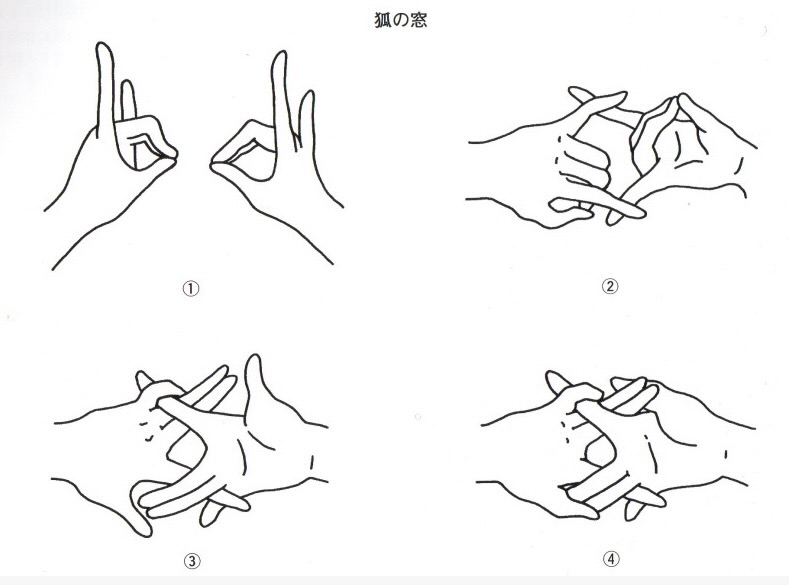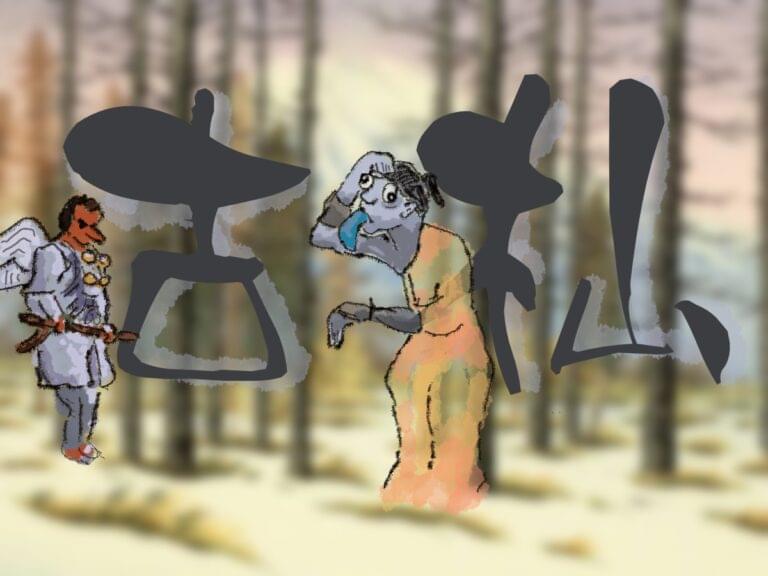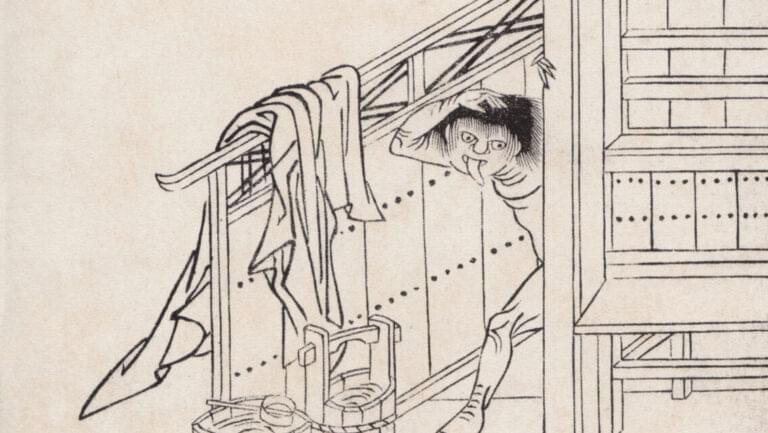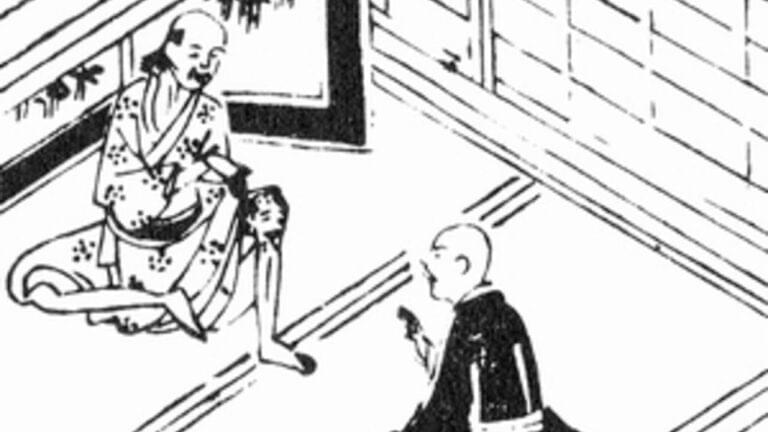This is Thersa Matsuura and you’re listening to Uncanny Japan.
Today’s Topic
We’ve talked about yokai here before. I’ve done episodes on the tsuchi no ko, kama itachi, korori, jinmensou, tofu kozou, ushi oni, etc.
But have I’ve ever talked about how to find a yokai. Where they specifically like to hang out, the difference between a yokai and a yurei/ghost, and how to increase your odds of meeting up with one — a yokai not a yurei? Japanese ghosts aren’t something you’d want to bump into.
Well, that’s exactly what I’m going to go into today.
Intro
Hey, hey, how is everyone doing these days? I’m well and I hope you are, too.
Ikai, Another World Existing Near Us
So one thing I’ve always loved about Japan and been fascinated with is the idea that there is another “world” (for lack of a better word) existing alongside our everyday one. It’s just a matter of seeing it or finding it or it finding you.
There are different names it goes by, but one is ikai/異界 (literally different or other world) and it’s not exactly like what I’ve experienced in the States for quite a few reasons. But one is that it’s not just ghosts or spirits who live in this ikai, you also have yokai there, too. I could spend the entire episode defining yokai, but instead in the show notes I’ll put up links to some other episodes where I discuss them or you can just search for #yokai on UncannyJapan.com and they’ll miraculously appear. The episodes, not the yokai. At least not yet. Keep listening.
Different Names for Yōkai
Here’s one theory as to how yokai came about in the first place: that is, it’s from our human sense of awe and fear. That basically through the ages, people have kind of conjured them into existence. It’s important to note that while yokai is the most widely used word for these apparitions today, they used to be called other things. Like ayakashi/妖, bakemono/化け物, zukuhenge/付く変げ, obake/お化け, and henka/変化, to name a few.
It wasn’t too long ago, when someone was walking alone through the forest or a mountain pass, maybe it’s nighttime, maybe they’re carrying a paper lantern to light the way, whatever it is, they might notice something strange, unexpected, and unexplainable and they would first blame it on a fox or tanuki playing tricks. At sea they were said to be funarei/船霊boat ghosts.
Identify What’s Tricking You
Here’s something I found interesting while reading, that is it was thought that when you experienced such a weird encounter, or freaky phenomenon you should as quickly as you could identify what it was that was messing with you. Was it fox? Was it a tanuki? By doing this you could escape danger. If you could expose the real identity of a yokai that was attempting to frighten you, then it lost the power to transform and that means impersonate humans, too. Which I suppose could really get you in trouble. So you needed a way to expose these tricksters. But how?
Matanozoki: To Identify Yōkai or Ghosts
Here’s an example of how it was done at sea: If you’re out on the ocean and in the distance you see a ship that looks suspicious, like it might be a ghost ship populated by funarei/boat ghosts, what you do is turn around, place your feet shoulder width apart, bend over, and look at it from between your legs, upside down. If it’s a regular boat or ship, it will look just the same except upside down. If it’s a ghost ship, it will look the same, except the bottom, the hull, won’t actually be touching the surface of the water.
This action is called mata nozoki/股のぞき. Mata is the space between your legs, and nozoki means to look or peek. And boy does that sound horrible when I say it out loud in English. But seriously it not weird. Well, it is weird, but not in the way you’re thinking it’s weird.
Amano-Hashidate and Matanozoki
If you’ve ever been to Amano-Hashidate in Kyoto you might see a lot of people doing this. In that case, it’s less to do with yokai and more to do with dragons. There are some viewing platforms that looks out over the ocean and to the peninsula beyond. There’s also a thin windy bit of land that connects the two. If you do mata nozoki that wind-y bit and the water and sky all come together to look like a dragon ascending into the heavens. It’s an old tradition and it’s lucky to do and see. They even have hand rails for those who need a little steadying. That’s Amano-Hashidate in northern Kyoto. It’s one of the three most spectacular views in Japan, it is said.
Why Matanozoki Works
Let’s return to seeing through a specter’s disguise. How it’s supposed to work is that by making everything backwards. You’re turned away from the ship but you’re leaned over so the top of your body is now where the bottom of your body should be, that somehow by making everything topsy turvy, you’re able to pierce the veils that divides the two worlds. You can now gaze into this ikai/異界, where ghosts and yokai exist. So keep that in mind next time you’re in Japan and something weird happens. And don’t worry about looking weird.
Kitsune no Yomeiri: The Fox’s Wedding Procession
Quick quiz: what is it called when the sun is shining, but it starts to rain? Yes, a Kitsune no Yomeiri or a Fox Wedding Procession. Another otherworldly occurance.
Kitsune no Mado: The Fox Window Technique

That seques into something called a Kitsune no Mado or a Fox Window. This is another trick to identify what might be haunting you or lurking nearby. What this is is when you take your hands and make this complicated shape. There’s no way I can explain it, but I can put a little image of it up in the show notes. It’s possible to do, but takes a couple of minutes to figure out. You’ve got to get your fingers all twisty and stuff. Anyway, after you’ve made your Kitsune no Mado, you’ll have a little square area that you can look through in the middle of your mudra-looking hand thing. And that is another way to see the true form of a yokai.
A really good use of this is if you’re outside and a Kitsune no Yomeiri happens. It’s sunny, yet it starts to sprinkle. So you know there is a fox’s wedding procession somewhere close. Quickly twist your fingers into a Kitsune no Mado/Fox Window, hold it up to one eye, and you’ll actually be able to see the wedding procession of the foxes. It is said.
Sode Nozoki: Peeking from Behind Your Sleeve
Now, if the hand manipulating is too difficult and you’re not the rambunctious type who just turns, bends over and looks between your legs to identify whether or not there is a yokai or yurei in the vicinity. I mean if you have a little more decoram than that, but still want to know what’s going on around you, then there’s a third method of seeing through to the other side. It’s called sode nozoki, or peeking from underneath your sleeve. It would help if you’re wearing a kimono with furisode, those long sleeves. You hold up your arm, your sleeve dangles down, and you look through the little window made there between the cloth and your side. I’m not exactly sure if this would work with our western attire or not. Maybe with a jacket with fringed sleeves?
Oh, and it’s not only yokai and ghosts you can spot doing this, but you can catch the random human soul that happen to be hanging around the area, too. Not quite ghosts. Just spirits.
Another theory is that those little windows you make, whether it’s between your legs, in between your crossed fingers, or under your sleeve, aren’t just a way to see into the other world or ikai and the things that dwell there, it might also be a window TO the other side. So they can come through as well. So use with caution.
Difference Between a Yōkai and a Ghost
What’s the difference between a ghost and a yokai. Let me tell you what Yanagita Kunio writes in his book Yokai Dangi.
1. A yokai appears in certain places and you have to pass through that place or go into it to encounter one. Think about Zashiki Warashi (Episode 47 ), where there are certain old inns you can stay in and while sleeping have one or two little children show up. They’re part of that environment.
A ghost or yurei, he writes, comes from the other side, comes after or actively follows you, and no matter how far you run, you can’t escape them. Think Oiwa (Episode 42). She haunted Iemon wherever he went.
2. A yokai doesn’t choose who they’re going to scare the crap out of or mess with or whatever. It’s whoever shows up when they happen to be active. A Japanese ghost, however, chooses their target and focuses on that person.
3. A yurei likes to appear at Ushi Mitsu Doki, the hour of the Ox which is the spookiest time of night and it coincides with 2am to two thirty am. (I talked more on this in Episode 62). As for a yokai they will often appear at twilight and dawn, those in between hours.
Yanagita Kunio says basically, a yokai is attached to a place and a yurei is attached to a person. He goes on to say a ghost is a person who dies still holding on to some great emotion, like jealousy, rage, regret, a grudge, or just really not wanting to let go of a person or their life. This is what brings them back as ghosts. They were an actual person and they retain the character or essence of that person.
Now yes and no. I’m sure we’ve all heard about people who die in a certain place under certain unfortunate circumstances and then haunt that spot. Okiku of the Nine Plates (Episode 25) was thrown down a well and her spirit is still believed to reside there today. I’m not arguing with the master, mind you. I just wanted to share what he had written.
Where to Find a Yōkai
Now you know how to spot a yokai and a yurei. You know how to tell the difference between the two more or less and what time of the day to look for one or the other, the next question is where do you find one?
Well, here are some good places to look for your yokai.
1. In old houses. This is kind of a given. So many yokai hang out in old houses. Zashiki Warashi, I just mentioned. Makura Gaeshi, pillow turners. Haradashi, belly exposers. The Akaname, those long tongued creatures who lick the slime and mold from your bath tiles. Think of all those tsukumogami, objects that have been around so much they turn into yokai. There are a lot.
2. Graveyards. I suppose you risk running across a yuurei here. But there are things like fox fires, hitodama. Kubikajiri, head or neck biters. Nuppeppou or noperabou, those faceless blobby things. There’s something called a kasha, a kind of burning wheel that steals corpses from cemeteries. There are a lot here, as well.
3. Bridges. A bridge is a wonderful symbol for connecting this world to that world. I think though probably Hashihime is who I think of most when I think of bridges. There are arguments on both sides, whether she’s a yurei or yokai. (Episode 111)
4. Hills and mountains. Loads of yokai hang out in the mountains of Japan. Of course you have your tanuki, kitsune, oni and tengu, the biggies, but there are also yamauba, mountain witches or hags. Yuki Onna, the snow
5. Crossroads. Where two paths cross is also an excellent place to bump into that ikai world. Maybe a hitomebozu, one eyed boy is waiting for you here. Or a tofu kozu, a small youkai holding out a block of tofu for you to taste.
6. Tsuka. Which can be a single important person’s tomb or some other stone monument. These can be found all over Japan and nice place for bakemono to hang out.
7. Mura sakai. Which means the border or boundary of your village. Again, boundaries, in between places are very attractive to these other worlders. Keep your eye on them.
And last, Number 8 a fuchi, which I talked about last episode. Those really deep slow moving parts of rivers. Usually at a bend in the river. Here you can find kappa, of course. Or nure onna, that snake bodied, woman-headed creature. The ushi oni, too.
Okay, there you have it. Where to find yokai and yurei if you’re insane and a couple methods on how to see them because they’re mysterious and otherworldly.
So practice your mata nozoki and your sode nozoki also your kitsune no mado, so that next time you’re wandering the border of your village at dawn or standing at a crossroads at dusk and you notice something a little “off”, you’ve got a way to check and verify your suspicions. Maybe that adorable red-cheeked old man is really a tanuki. Maybe that atractive woman with the cinnamon brown hair and hazel eyes isn’t flirting with you, she’s a fox who wants to lead you deeper into the woods you can meet her children. Her very hungry children.
Thank you for listening, stay safe and well and I’ll talk to you again in two weeks.






